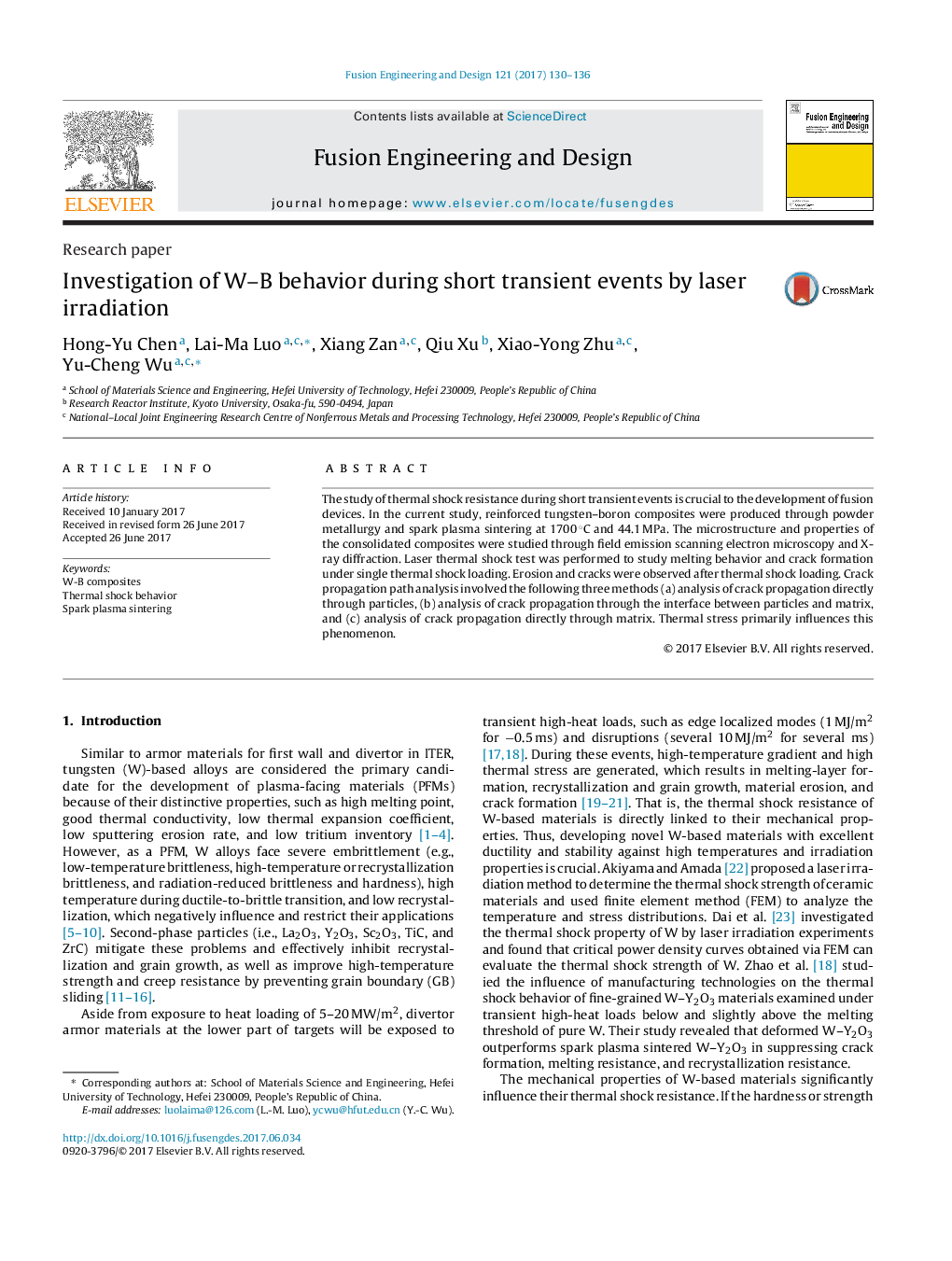| Article ID | Journal | Published Year | Pages | File Type |
|---|---|---|---|---|
| 4921052 | Fusion Engineering and Design | 2017 | 7 Pages |
Abstract
The study of thermal shock resistance during short transient events is crucial to the development of fusion devices. In the current study, reinforced tungsten-boron composites were produced through powder metallurgy and spark plasma sintering at 1700 °C and 44.1 MPa. The microstructure and properties of the consolidated composites were studied through field emission scanning electron microscopy and X-ray diffraction. Laser thermal shock test was performed to study melting behavior and crack formation under single thermal shock loading. Erosion and cracks were observed after thermal shock loading. Crack propagation path analysis involved the following three methods (a) analysis of crack propagation directly through particles, (b) analysis of crack propagation through the interface between particles and matrix, and (c) analysis of crack propagation directly through matrix. Thermal stress primarily influences this phenomenon.
Related Topics
Physical Sciences and Engineering
Energy
Energy Engineering and Power Technology
Authors
Hong-Yu Chen, Lai-Ma Luo, Xiang Zan, Qiu Xu, Xiao-Yong Zhu, Yu-Cheng Wu,
